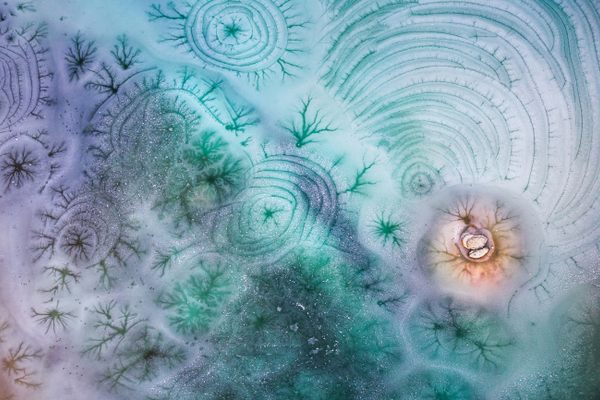Toxic Foam Is Fouling the Streets of Bangalore
Blown off a local lake, it’s disrupting traffic and making people sick.
Foam blowing through city streets sounds like it could be a pleasant sight, but as the residents of a Bangalore, India, neighborhood are discovering, it can be incredibly unpleasant. During major rainstorms, a white foam has been forming on the surface of Varthur Lake, on the east side of the city. High winds then whip it up and blow it around what is known as the “Silicon Valley of India.” The foam is disrupting traffic, but more than that—it’s toxic.
#BLR not only had rainfall but also snowfall. This is Varthur Lake foam engulfing vehicles on the bridge. pic.twitter.com/kUBoibwxA8
— RK Misra (@rk_misra) July 29, 2016
That’s because the foul-smelling foam, which can cause skin and respiratory problems, contains phosphorous from sewage and industrial pollution in the lake, according to CNN. “When sewage gets into the water body, nutrients, in the form of nitrogen and phosphorus, go in too,” TV Ramachandra, a researcher at the Indian Institute of Science in Bangalore, told CNN. “The nitrogen is taken by the plants in the water, while the phosphorus gets trapped in the sediment. The rainfall and the high wind velocity churn the lakes, and the phosphorus that is trapped in the sediment is released, creating the foam.”
@OfficeOfRG This is the condition of Bangalore Varthur Lake. No results after 2+ years. You may like to discuss this with your party’s CM pic.twitter.com/jqZCxly3wz
— Panch 🇮🇳 (@panache2811) May 29, 2017
The city erected a wire fence in an attempt to keep the frothy plague contained, but it was overmatched by a large storm. This isn’t the first time the city has experienced this problem—social media posts documenting the phenomenon date back to 2013. According to the Times of India, foaming has been a problem on two other lakes in the area. No other official action, besides testing for chemicals in the lakes, has been taken, according to news reports. So it looks like the toxic “snow” will continue to plague the streets.


















Follow us on Twitter to get the latest on the world's hidden wonders.
Like us on Facebook to get the latest on the world's hidden wonders.
Follow us on Twitter Like us on Facebook